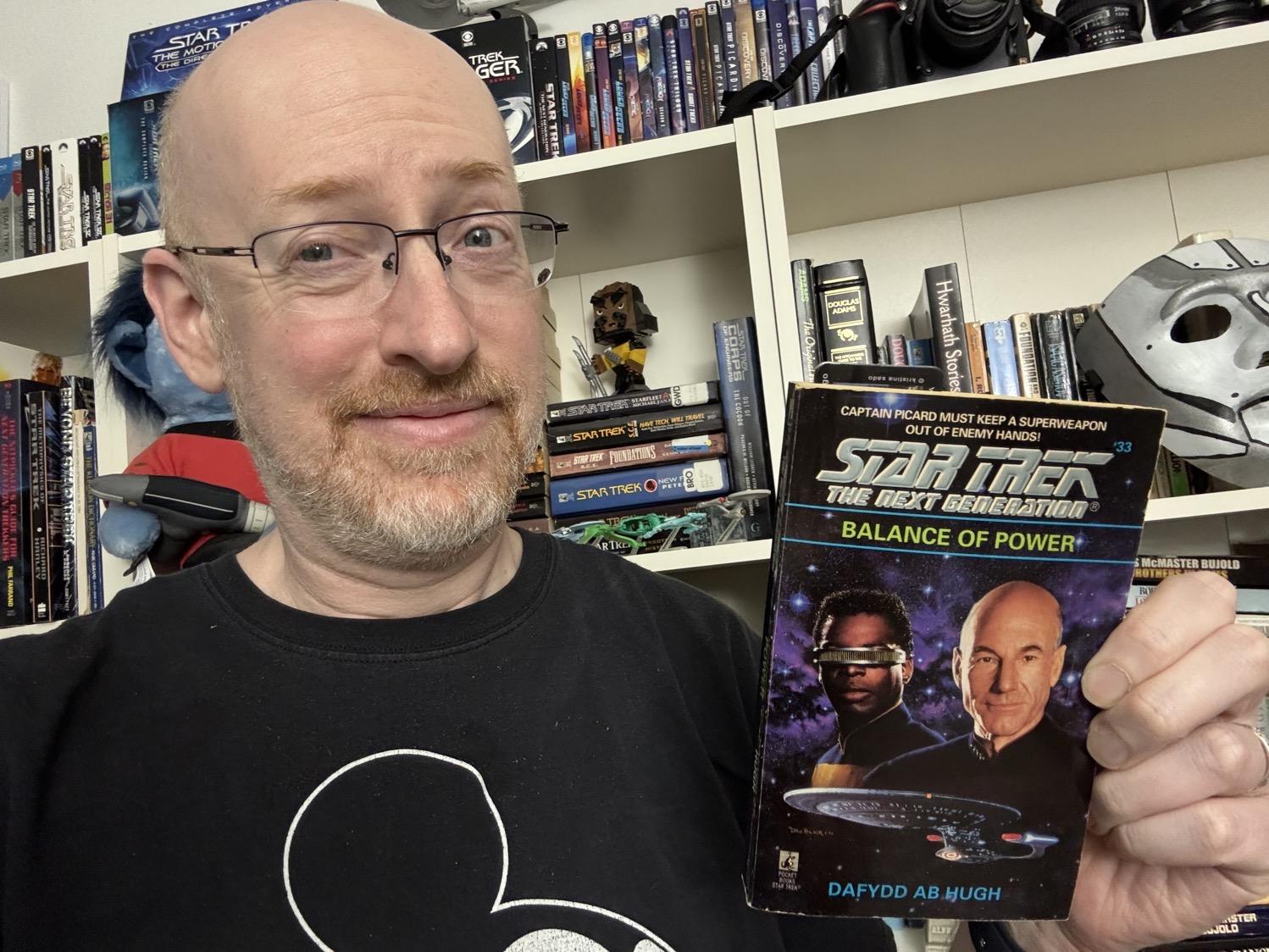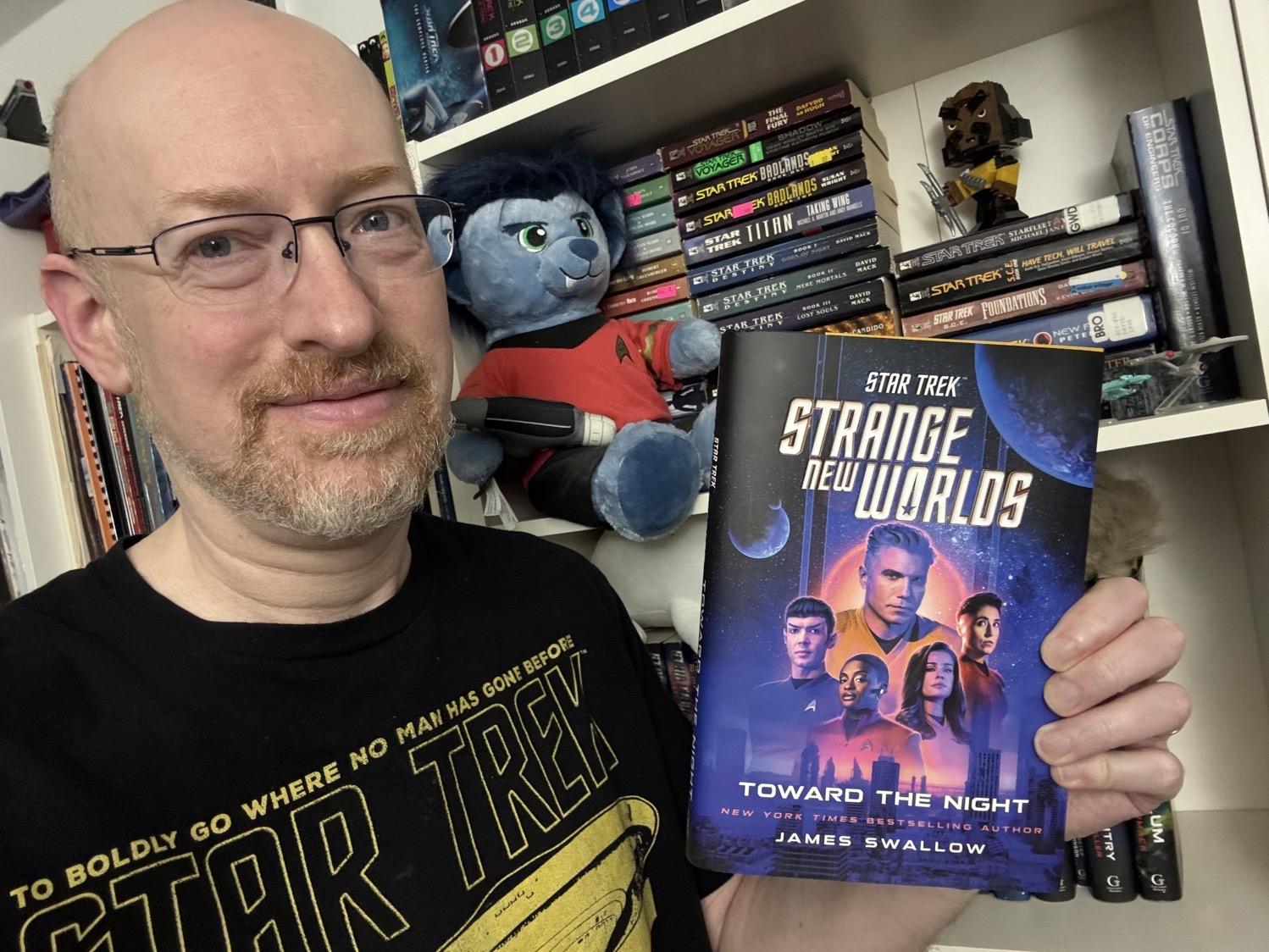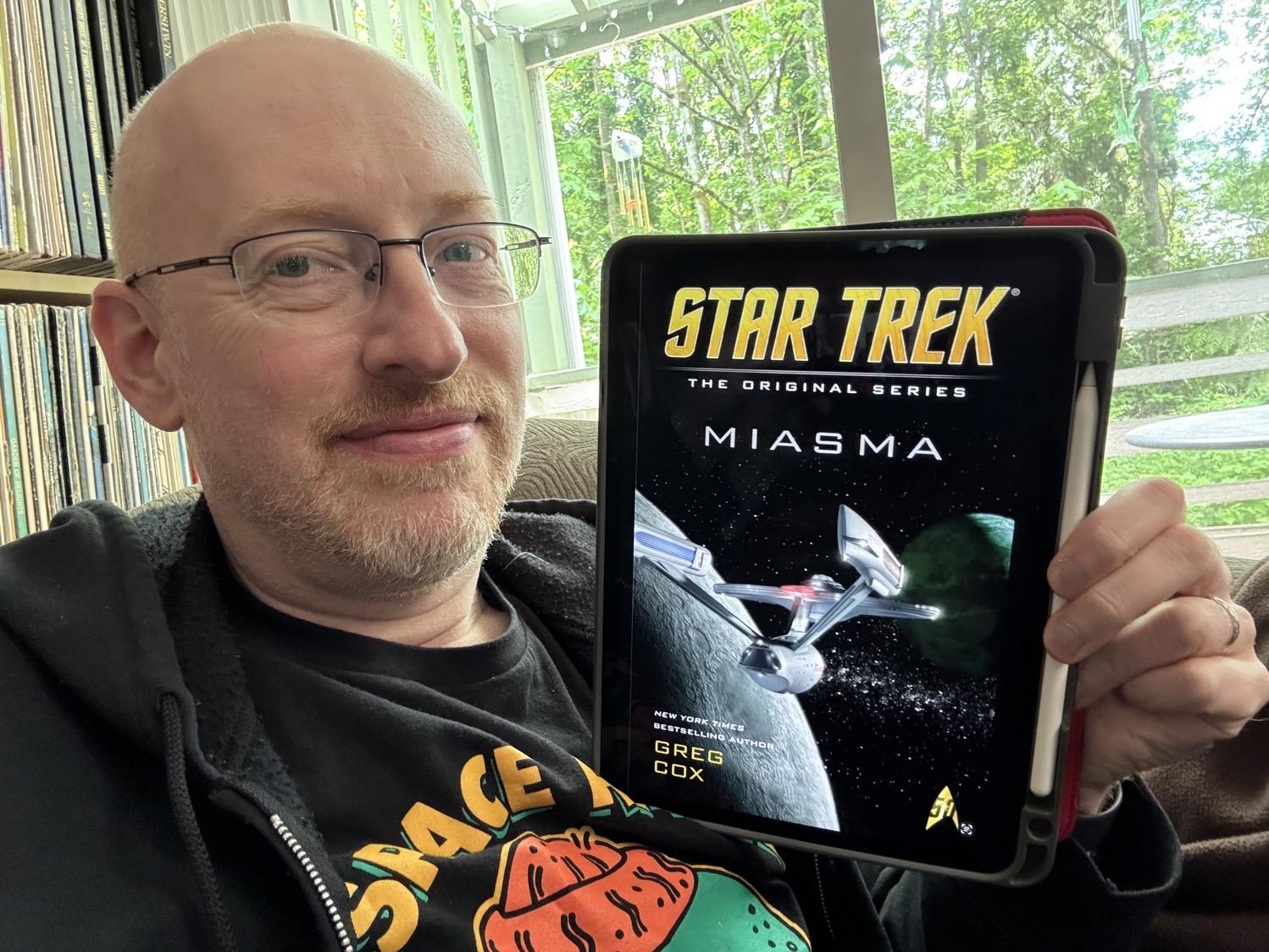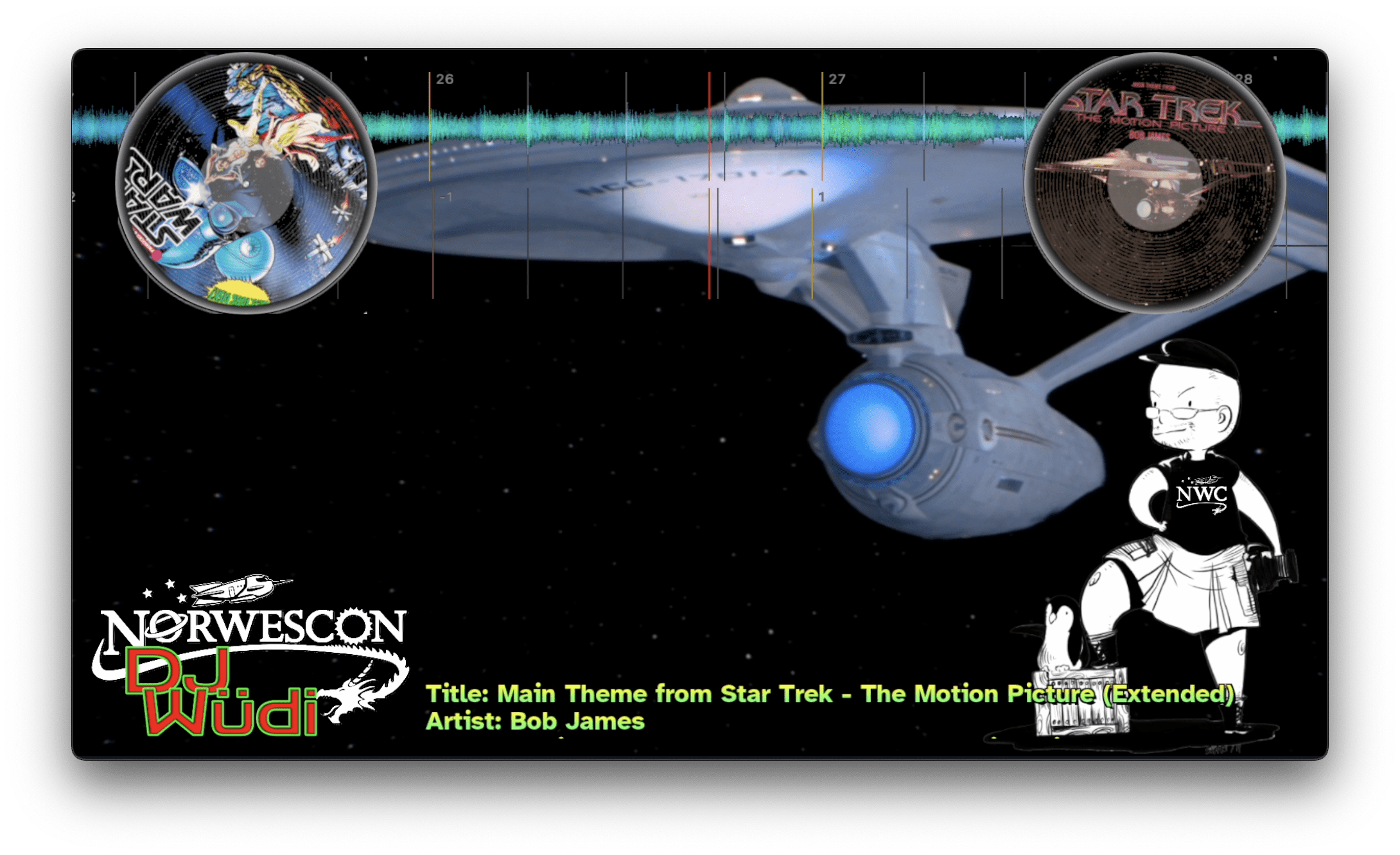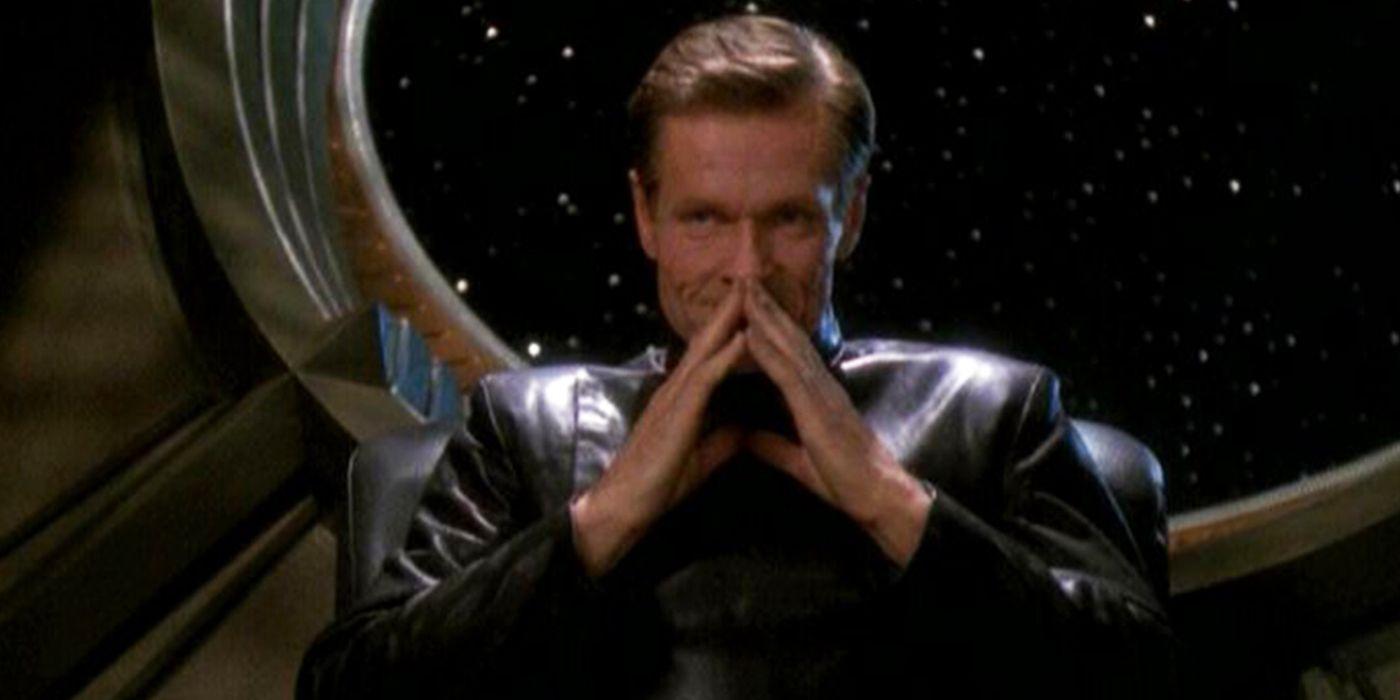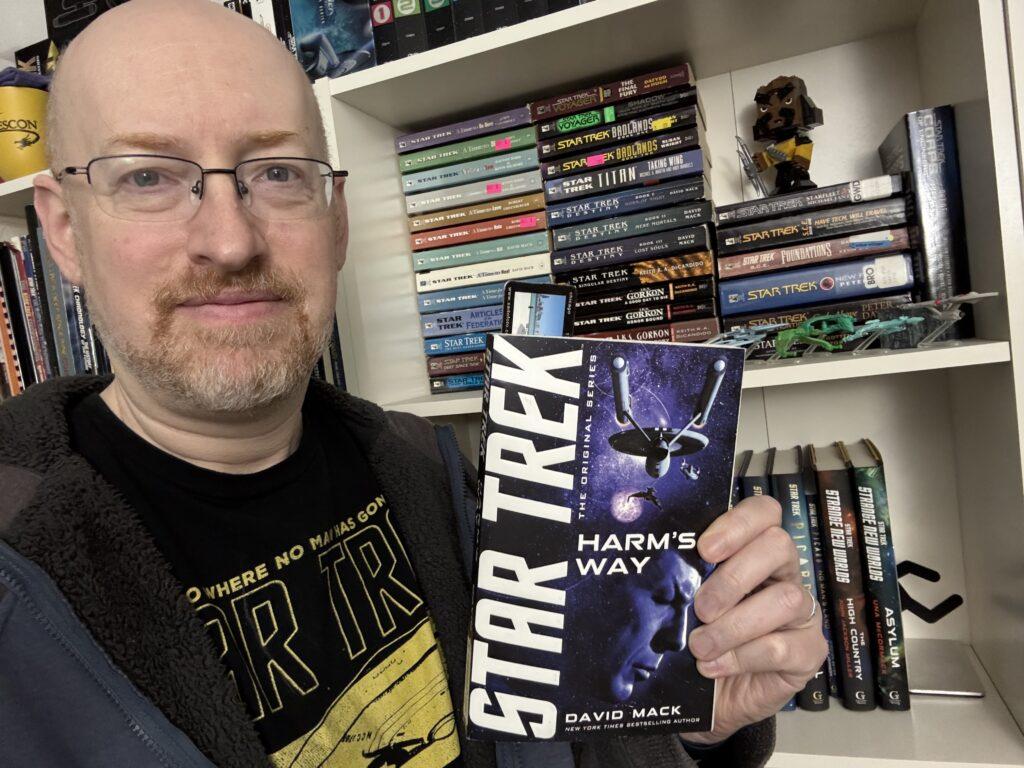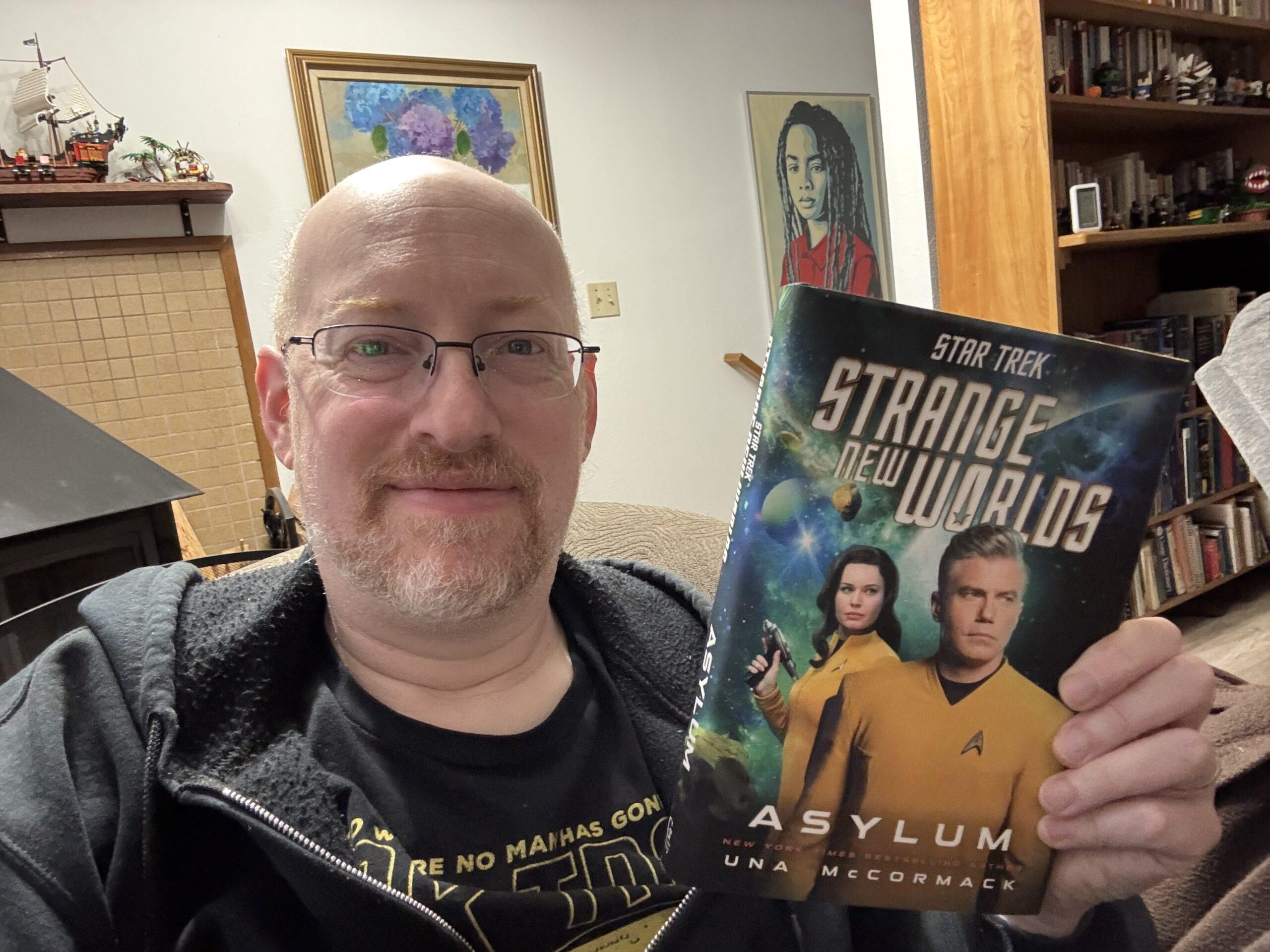My Thursday night dance at Norwescon is going to have a “Star Trek vs. Star Wars” theme, so I put together a video to play behind me of starship shots from the movies. I alternated clips between franchises, and most of them have been in the 10-20 second range; a few as short as 4, a few as long as 40.
In my alternating, when I made it up to the refit Enterprise reveal in The Motion Picture, you may be surprised to read that I restrained myself, and did not just drop the full eight-minute sequence in there.
Cutting out Kirk and Scotty’s reactions and some shots that are mostly spacedock scaffolding got it down to two minutes, fifty-one seconds.
I’m biased, and I’m not even sorry about it. 😆
Here’s a two-minute sneak peek (originally posted to Facebook, and so is silent so as not to run afoul of their automated audio copyright bots; feel free to listen to whatever audio you wish as you watch) of my background graphic setup for the Norwescon Thursday night dance. This will be playing on the big projection screen/video wall on the stage behind me.
The background video is 2 hours and 12 minutes of mixed Star Wars and Star Trek spaceship and battle shots (space and space ships only, no on-the-ground battles, so no Hoth or Endor). Two hours of that goes back and forth between Trek and Wars, but the last ten minutes is all Trek, because I was only pulling from the theatrical films, and there are two more Trek films than there are Wars films.
The “vinyl” platters at the top left and right automatically update with the cover art for whatever track is being played, and rotate as if they were actual turntables.
The waveform display at the top is live waveforms of the audio being played; the top waveform is the left turntable, the bottom is the right.
The title and artist of the currently playing track at the bottom automatically update.
The graphics on the t-shirt that the mini-cartoon-me is wearing randomly change every few seconds, with a selection of mostly (but not entirely) Trek or Wars themed images.
Some slightly more technical details for those who may be interested:
All the elements are assembled in OBS, and when I’m DJing, I’ll be pushing that video stream out to the the on-stage screen behind me.
The turntables and audio waveforms are pulled from djay Pro using OBS’s window capture feature, cropping down to the elements I need, playing with the color levels, and adding an alpha channel to turn dark/black pixels transparent. Cover art with dark/black pixels that become transparent is accounted for by placing the turntable graphics over PNGs of black circles to act as “platters” and black out the background video.
The “now playing” text also comes from djay Pro; in this case, djay Pro automatically creates a “now playing” text file, and I tell OBS to read and display that text file.
The Norwescon and DJ Wüdi logos are simple static PNG files.
The cartoon me is a static PNG file with a plain black shirt. I point OBS to a directory with small square white-on-black images that it randomly picks from on a five second rotation to create the “print” on the t-shirt.
